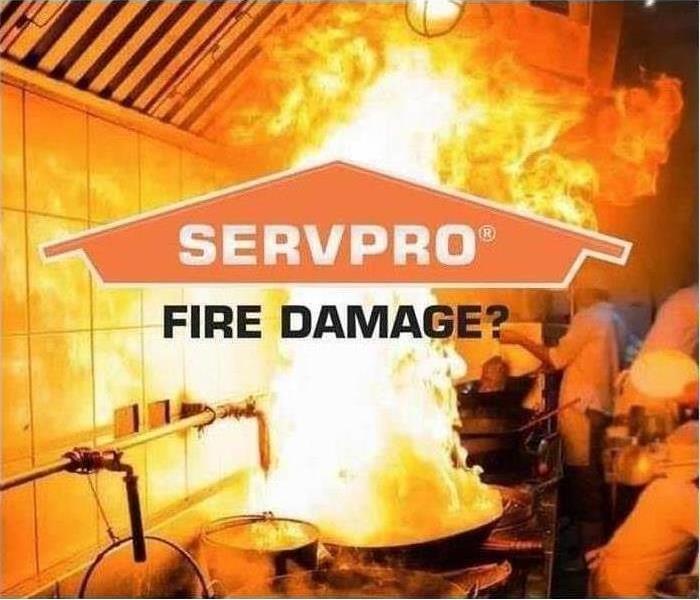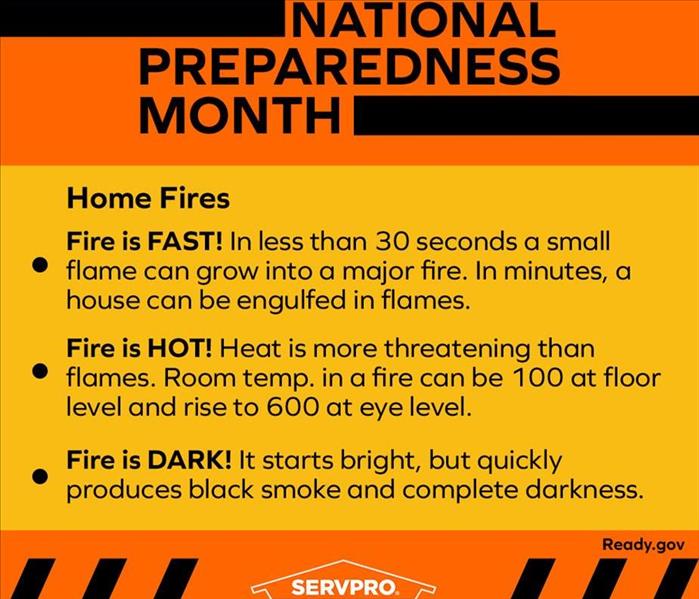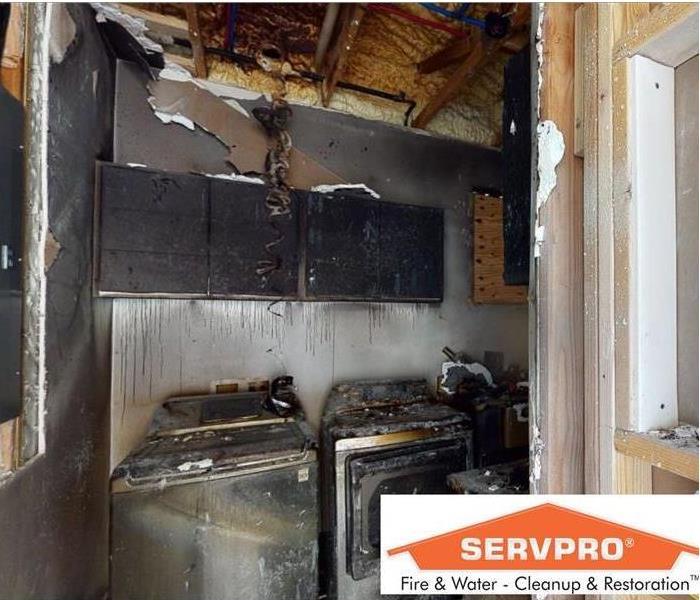Recent Fire Damage Posts
The Different Types of Fire Damage
6/20/2024 (Permalink)
 Kitchen on fire with SERVPRO logo above it.
Kitchen on fire with SERVPRO logo above it.
Dealing with fire damage can be a long process. The fire could have been small, but its smoke did most of the damage. Conversely, most of the damage could have been from the fire itself. Lastly, another layer of damage could have been caused when the fire was extinguished. Here are the main types of fire damage that are commonly dealt with.
Flame Damage—This could be from an electrical outlet that caused damage that led to a full-blown kitchen fire.
Smoke Damage—Smoke is literally in the air and can (and will) get into everything. Even after the rebuild is completed, the property can still have a lingering smell of smoke unless it is dealt with correctly.
3rd Party Damage - This type of damage comes from any in-house sprinkler system used to put the fire out or from the Fire Department themselves when they get to the scene.
Heat Damage—Even though a part of the structure might not have actually caught fire, it was probably severely heated. This can cause structural damage and possible swelling that you might overlook right away.
After a fire, you could simultaneously deal with flame, smoke, water, and heat damage. FEMA has some great information on what to do after the fire. The best way to ensure this is taken care of promptly and properly is to contact the team at SERVPRO to get on the job!
Tips On How To Prevent Home/Office Fires
5/1/2023 (Permalink)
Nobody wants to think about their home or office catching on fire. Sometimes these things happen and they are totally out of our control, but there are a lot of things that we can do to help prevent them.
FEMA’s records show that just over half (50.2%) of residential fires are caused by cooking-related accidents. The next three biggest reasons are Heating (9.3%), Electrical Malfunction (6.8%), and Intentional (4.5%).
Here are a few things that you can do to help prevent a house fire and protect your family.
Pay attention when cooking. If you need to step out of the room, ask someone to watch the food until you get back, or turn off the stove and stop cooking.
Test your smoke alarms regularly.
Check the dryers’ airflow. Pull the lint trap and clean it every time you dry a load of clothes.
Be careful with power cords and strips. Attaching too many appliances to one power strip can draw more power than the cord is able to handle. This can cause it to heat up and potentially catch on fire.
Store flammable products away from heat sources.
Place fire extinguishers in key locations around your house. Make sure that everyone in the home knows how to properly use them.
If you need help after a fire, SERVPRO of Olive Branch & Marshall County is here to help. We can replace the damaged areas, check your electrical system for any potential issues, and can even help you get that smoke smell out of your home.
FEMA, https://www.usfa.fema.gov/data/statistics/#causesR
Dryer Lint Fire Prevention
5/1/2023 (Permalink)
While it is easy to forget to clear dryer lint between loads of laundry, this small oversight can have severe consequences. In fact, according to the U.S. Fire Administration, there are approximately 2,900 dryer-related fires each year, accounting for $35 million in property loss, five deaths, and 100 injuries. Additional facts include:
- 34% of people regularly fail to clean their dryers, making it the leading cause of home clothes dryer fires
- Dryer fires occur most prominently in the fall and winter, spiking in January
Keeping an eye on your dryer lint is an easy way to prevent fire damage to your home or business and keep yourself safe. This article outlines the ways dryer lint can pose a fire threat, how to safely ensure your dryer lint is regularly disposed of, and how SERVPRO® can help if your dryer catches on fire.
What is Dryer Lint?
According to Merriam-Webster Dictionary, lint is defined as “Fuzz consisting especially of fine ravelings and short fibers of yarn and fabric.” In other words, it is the material that comes off clothing, towels, and other cloth during the drying process. If not regularly emptied between loads, your lint trap could become stuffed with lint to the point of being a hazard. Combined with the friction and heat of a dryer, fires could be triggered during routine laundry duties.
Dryer Vent vs. Lint Trap
Before we get into precautionary tips, it is important to outline the difference between two commonly confused parts of a dryer: a dryer vent, and a lint trap. So, what’s the difference?
This resource on Whirlpool’s website outlines the internal and external parts of a dryer. According to Whirlpool, a lint trap is “located either on the exterior of the dryer or the inside door opening. It collects lint and debris as it passes through the dryer vent.”
Allwords defines a dryer vent as “A vent connected to a clothes dryer that is used to screen lint and remove exhaust.”
Dryer Lint Fire Prevention Tips
According to the U.S. Fire Administration, the following tips can help prevent dryer lint and other laundry-related fires:
- Every three months, clean lint out of the vent pipe
- Clean behind the dryer where lint can build up
- Use a nylon brush to clean the lint filter every six months (or more often) to prevent clogging
- Have a professional regularly inspect and clean your dryer, especially when it is taking longer than normal to dry
- Unplug or disconnect the dryer if you will be away for an extended period
- Ensure the area surrounding the dryer is free of materials that may catch fire
Furthermore, there are two things you shouldn’t do:
- Do not use a lint filter that is clogged, damaged, or loose
- Do not use a dryer without a lint filter
Ultimately, one of the easiest tips to remember (mentioned at the beginning of this article) bears repeating—clean out your lint trap between each load of laundry, and you will substantially reduce the chance of fire.

 24/7 Emergency Service
24/7 Emergency Service


